Heroes: June Ambrose
Keeping score with fashion’s leading power player, Ambrose and Diddy talk hip hop, fashion, and her new line with Puma
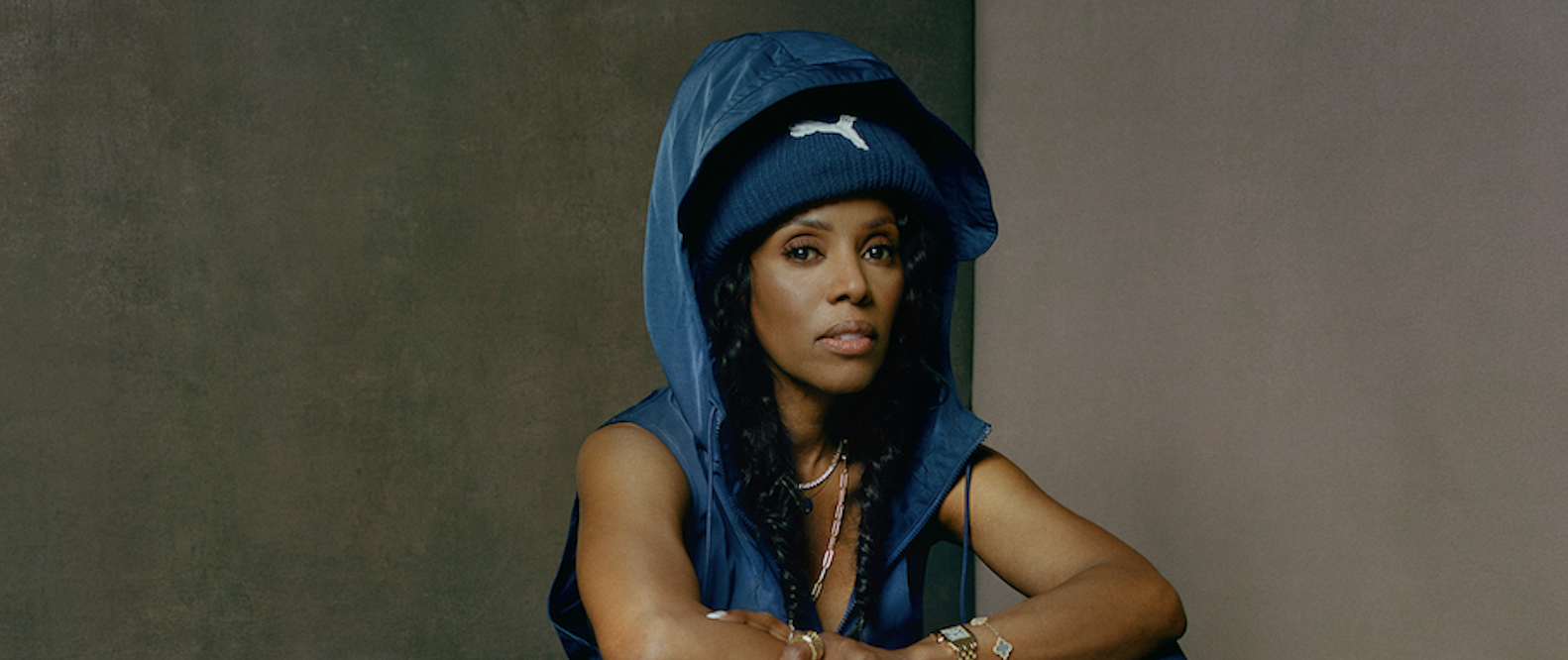
Marking nearly 26 years since the first creative collaboration of pioneering powerhouse June Ambrose and music mogul Sean Combs better known as “Diddy”—the kindred spirits reconnect to examine the impact of the iconic hip-hop staple “Mo Money Mo Problems.” The video’s influence still echoes through today’s stratosphere, serving as the ultimate testament to the forward-thinking and timeless touch of Ambrose’s work. Now with having styled over 200 music videos, garnered a roster of high-profile clients like Jay-Z, and her 2020 appointment as PUMA’s creative director—the visionary is doubling down on utilizing the power of design as a vocabulary to tell stories deeply rooted in culture.
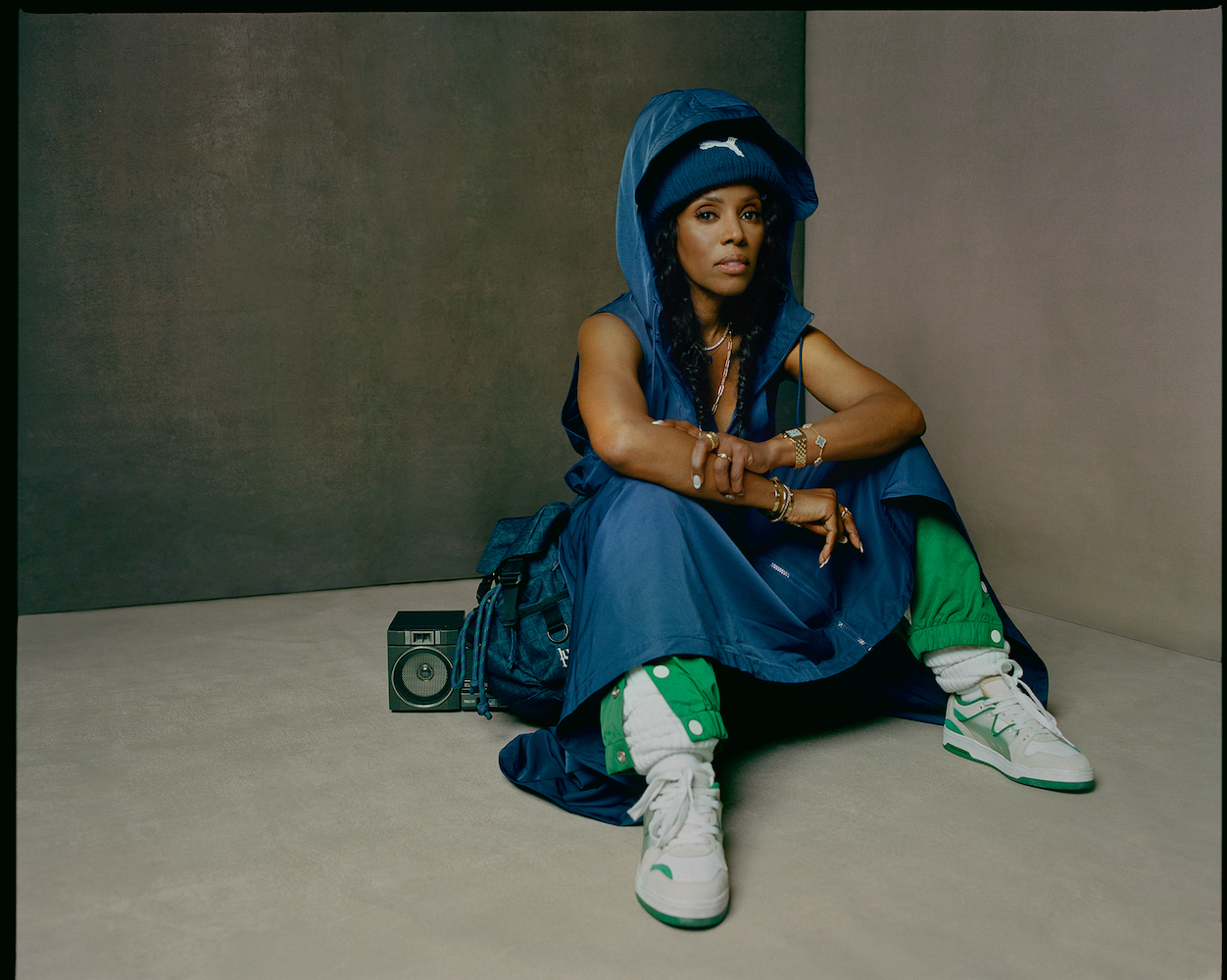
DIDDY: I’ve known you for years, but I’ve never known how you got into fashion.
JUNE AMBROSE: To be honest, I’ve loved fashion since I was a little girl. Fashion was a way for me to express myself, to tell a story. Especially growing up in the Bronx, you don’t really see people that look like your dreams, so I wanted to create my own dreams and use myself as my muse. I would literally cut up my grandmother’s curtains and design dresses to create Barbie doll looks. I’m tiny, and I wanted to be larger than life. When I met you, I felt like we had the same personality, you always dreamed big. It was like I was finally meeting someone who could see me. I remember one time specifically you were looking at collection magazines, and I was like, “Oh my God, I’ve found my fashion fairy godfather.” We shared the same dreams and aspirations of becoming what we knew we were born into, which is greatness. But my journey wasn’t easy by any means. I was a five-foot-two woman, with big glasses in a very male-driven industry. It was all about the guys back then.
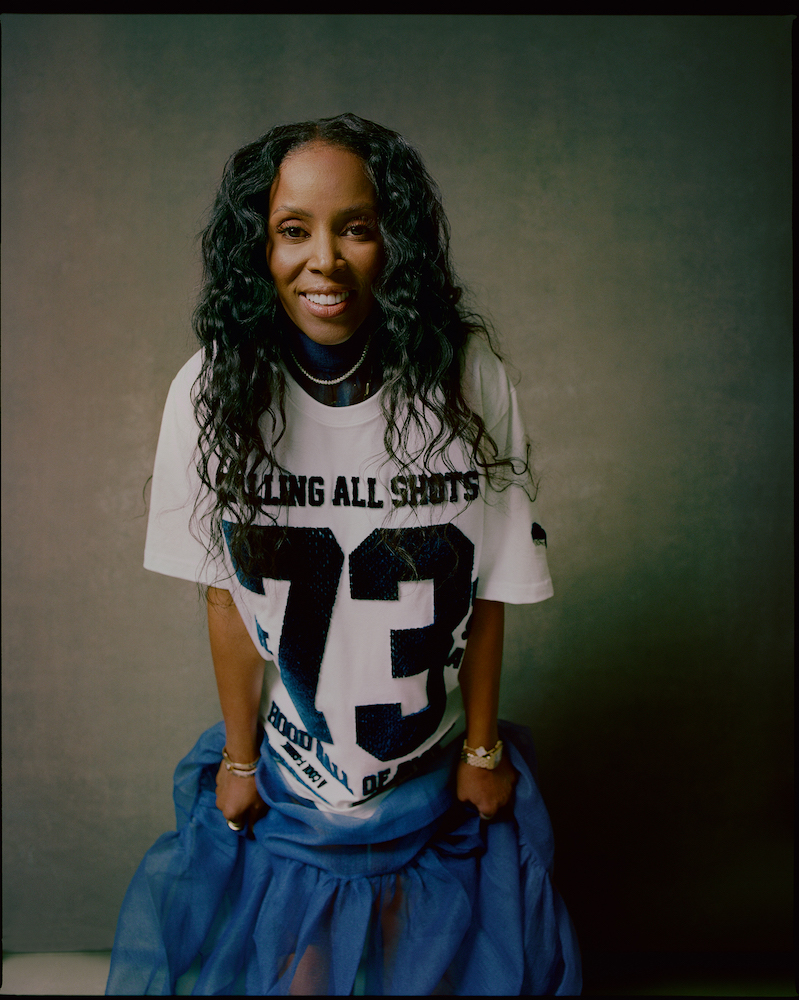
D: In hip-hop you are the true definition of fashion forward. We had our own style and level of comfortability, as far as pushing the limits. But you were always there to push it a little bit more forward. Where did that come from? Is there something [within] your upbringing that made you so bold with your fashion?
JA: There were two people, to be honest. My mother was a single mom, so she worked tirelessly. She used to put our clothes on layaway, but she would always make sure we were well-clothed. Then I had a step-grandmother who was like Diahann Carroll. She was super glamorous and just beautiful. When I came to America from Antigua, I lived with my step-grandmother in the Bronx and she was my point of reference for what glamor should be. Even if we were going to the grocery store or to meet the teachers, she had a fur coat on. So my mom was classic and then she was over-the-top. So if I marry those two women together, I would say that they were the perfect example of something to aspire to.
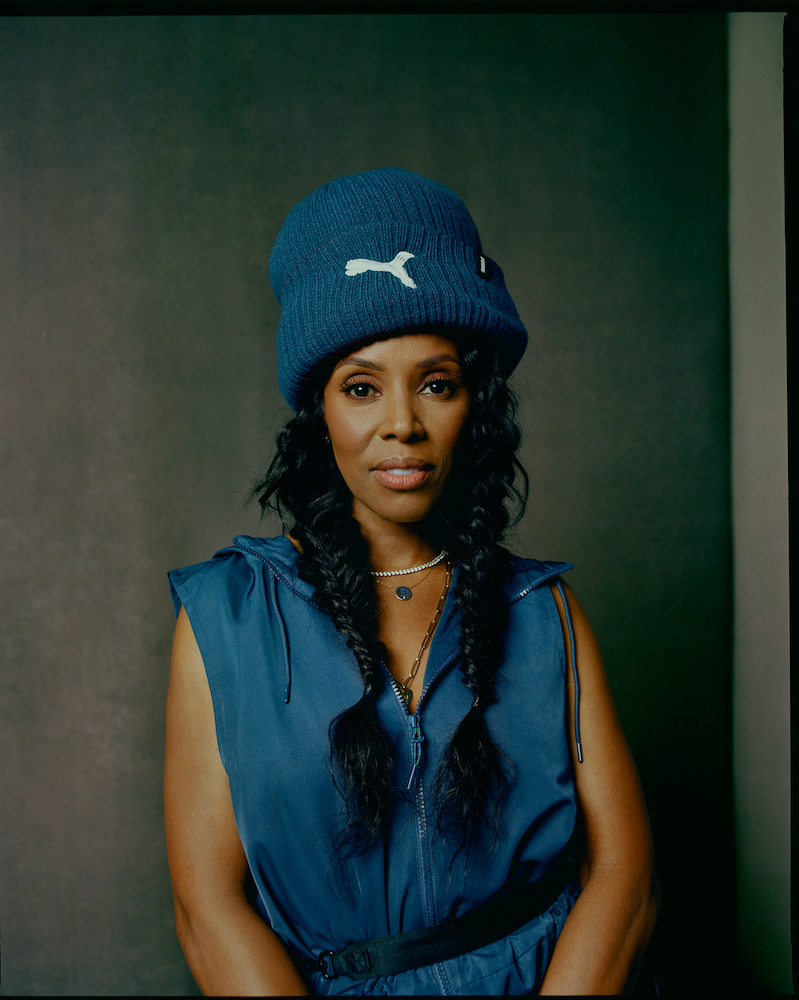
D: The first time I remember really having to trust you and your vision, I was completely not on the same page. It was the “Mo Money Mo Problems” music video, and everything had so much shine. I was feeling the rain suits with the goggles. But once we got into the red look, I wasn’t sure. This was during the time of gangster rap, you know? So everything was a bit different style wise. You had these bright red jackets that were [sparkly] and I just could not connect with it. But it just really shook things up. It really was a bold statement because it wasn’t anything off of the rack, you designed it. At that time, everything was the total opposite of shiny suits or even glamor in hip-hop.
JA: Fashion to me was what lyrics are to music. So if I could put style to your lyrics that was an achievement. At the time, the goal was just to really get pop music to play Black music. I felt like we were popular culture in my head, because I was in front of greatness. I felt like every artist that I worked with was so worthy of bigger ideas and bigger moments. I just felt like in order for us to cross over, we had to do things that took us outside of our comfort zone. Being different is sometimes lonely, but it was worth giving it my all. I was willing to put myself out there just because I knew it would push the culture forward.
D: It was minimalistic, but it was our definition of ghetto fabulous. And then when we put on those red, shiny suits, it felt like we got to feel what Michael Jackson felt like or Elton John. It was like the extra move that superstars make when they’re in that vortex of embracing the uncomfortable. So, as a past reluctant artist that trusted your taste level, do you come up against that today still? If so, how do you convince people now to trust you and your vision?
JA: Well, we didn’t have social media back then. So, I think the only thing that we could trust was each other and our guts, right? Now, the narratives are so different. You were also one of the pioneers, you gave artists a little bit more creative license and freedom. So there was less fear to take risks. It’s just a different time now. I think that I always want to be in a situation where I’m collaborating with people that are not afraid, and have tunnel vision. People who know how to cancel out noise.
The only way you can continue to maintain that level of what we did back then is to go into a bubble because now there’s too much outside influences. Everyone’s a critic, everyone has an opinion. But back then I feel like we were our own critics. We competed against ourselves, we kept score of each other, in a different way. We loved each other in a different way. I try to have those experiences now more than ever. There’s always gonna be pushback, but as soon as there’s pushback, I remind [my clients] to cancel it out.
Think about when there was no social media. If I’m working with a new artist, they don’t know anything else. The only thing I can do is hold them and say to them, “You have to trust yourself. Even if you don’t trust me, do whatever feels like it’s going to be something you look back on 10 or 15 years from now that has a cultural significance.” It’s more pressure for them now than anything, than it was for us. I think we are the gatekeepers and arbiters of all that. And I say “we” because we did it together. If you had just said yes to whatever I wanted to put you in, then there would be nothing for us to talk about right now. So I’m so humble and grateful that you gave me that opportunity. I’m forever indebted to you for that.
D: Well, thank you. Of course I’m always indebted to you for pushing me at that point. It really helped me to constantly push more as an artist. You need that breakthrough as an artist. So, that was that risk for me. And I haven’t looked back since the red shiny suits. We’ve talked about the past, but let’s talk about the present and the future right now. You have styled everybody, I don’t know if there’s anybody you haven’t. You have had a huge impact on the state of fashion right now, which a lot of it is birthed from the freedom of hip hop design coming out of the nineties, going into the two thousands, and we have definitely had a part in it.
Recently, you stepped beyond being a costume designer to actually doing a collaboration and designing a collection. I would say you are breathing exuberant life into Puma, which wasn’t really known for taking stylish risks or pushing the envelope. They’re definitely a legacy brand that is known for timelessness, and then disruptiveness came with your collection. Do you want to tell me the thoughts behind that and how that collaboration came about?
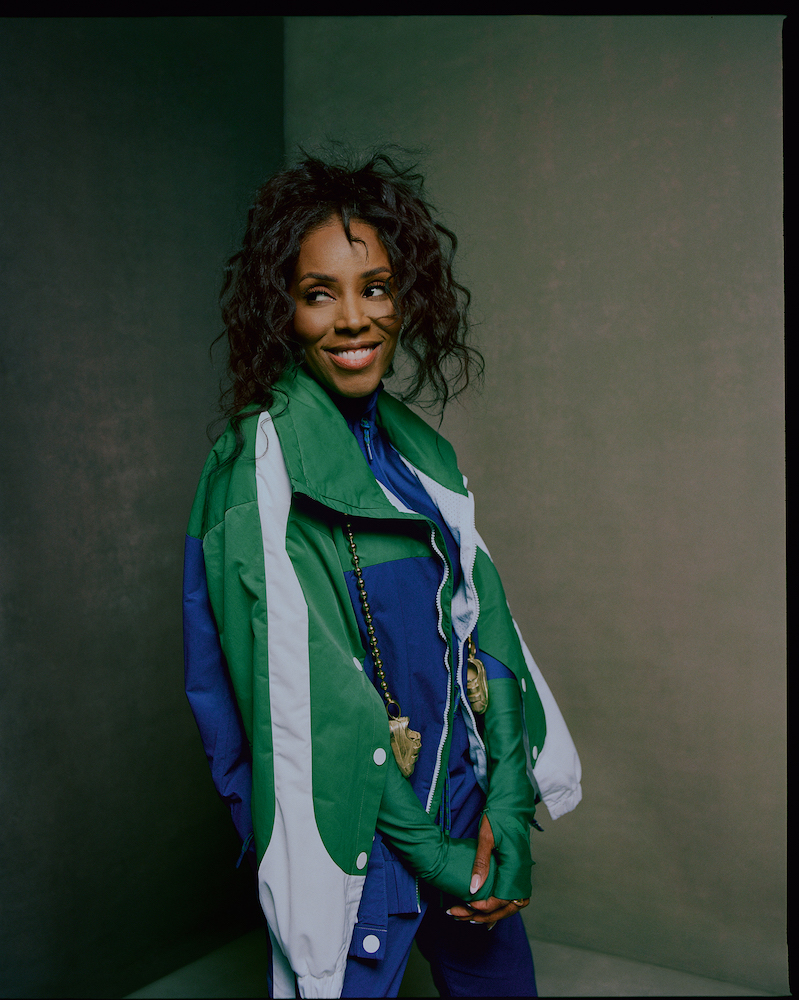
JA: I was brought into Puma to take on a division that was centered around creating [pieces] for women’s basketball. There was no women’s basketball prior to this and I got to launch it in a way that felt unexpected. I approached it the same crazy way I approached the music business, just doing things that didn’t seem like it made sense and bold colors, and it worked well. And then Puma gave me another big opportunity to do a runway show. One of the highlights of that show, and I have to say this…it is being able to put your son on the runway in a retro T7 leather tracksuit that was a nod to you and the 2000’s hip hop culture.
To be able to bridge those two energies, street culture and sportswear, but on a main stage, it was everything. We’ve been doing this since the late ’90s. We were taking sportswear silhouettes and creating them in luxury fabric. So, I’m just being disruptive and breaking the traditional mold and trying to create an opportunity for consumers to feel like superstars, like they’re in an alternate “june-iverse”. This is my first co-branded collaboration that I’m dropping with the brand, it’s called “Keeping Score”, and it’s dropping during the 50 year anniversary of hip hop. I could pull out the receipts about all of the things that we created then and how they’re so relevant now. So, with this collection, I’m just disrupting sportswear. Athletic wear is a great space to set off on a new adventure.
D: When are we gonna see this collection?
JA: The first half of it dropped on the 24th of this month, and the second half is dropping on March 16th. It’s a nod to hip hop culture and luxury sportswear. I sent you some photos, you know, it’s styled on women, but now everything is so gender fluid, it’s truly wearable for anyone. I always feel like the stuff that we were creating then, the consumer was looking for, but we didn’t have the partnerships and platforms necessary to be able to bring consumers the goods…and now we do. I mean, you launched Sean John, so you definitely had the platform to bring luxury and sportswear together, and I know you are working on that again. I think that you recognize the importance of luxury sportswear at this time. It’s eclipsing as classic, as forever. It’s not new, it’s heritage. I just think that we’re rebranding it and reimagining it and repurposing it into the new marketplaces and the new customer is there.
D: When you speak about the 50 year anniversary of hip hop as it relates to this collection, how do you feel about it being 50 years of hip hop and the influence that hip hop has had as a whole over fashion? Not just on streetwear, but on fashion in general.
JA: I mean, it’s tremendous. I’m so glad you brought that up because I grew up in the Bronx, the home of hip hop, so that was always the soundtrack to my life. I felt like it was great shoulders to stand on. And I think it’s a great time to celebrate because I think high fashion brands owe hiphop a thank you. If you look at all of their muses over the last couple years, they call it “street culture,” but it’s hip hop culture, it’s that genre of music, and it’s literally woven into the fabrics of every high fashion house.
D: Yeah, without a doubt.
JA: Before fashion houses let us in, we had to design the looks because it wasn’t like they were opening the doors for us. We were buying it, we were designing it, we were reimagining it—we took creative license. It is because of that, they had to jump on board. We were making so much noise, they couldn’t deny us.
D: So when you look at your legacy and what you created, what is your take on your legacy and what do you want future generations to say about your work? And what do you want them to remember you for?
JA: You don’t have to ask for permission to be great. Know that your work matters, that is something that no one can take away from you. Your creativity has value. You’ve got to be relentless. When you say “Can’t stop, won’t stop,” that relentless tenacity is what young people need to understand. It’s not gonna happen overnight, no one owes you anything. You have to literally work and educate yourself as much as you can, and it’s not always just about partnerships or ownership. You have to look for ways of collaborating where you can build things together and not always wait for that person to give you the opportunity, but you have to take it. So hopefully, my legacy will be that I was not afraid to take what I know belongs to me. Success belongs to me. I own it.
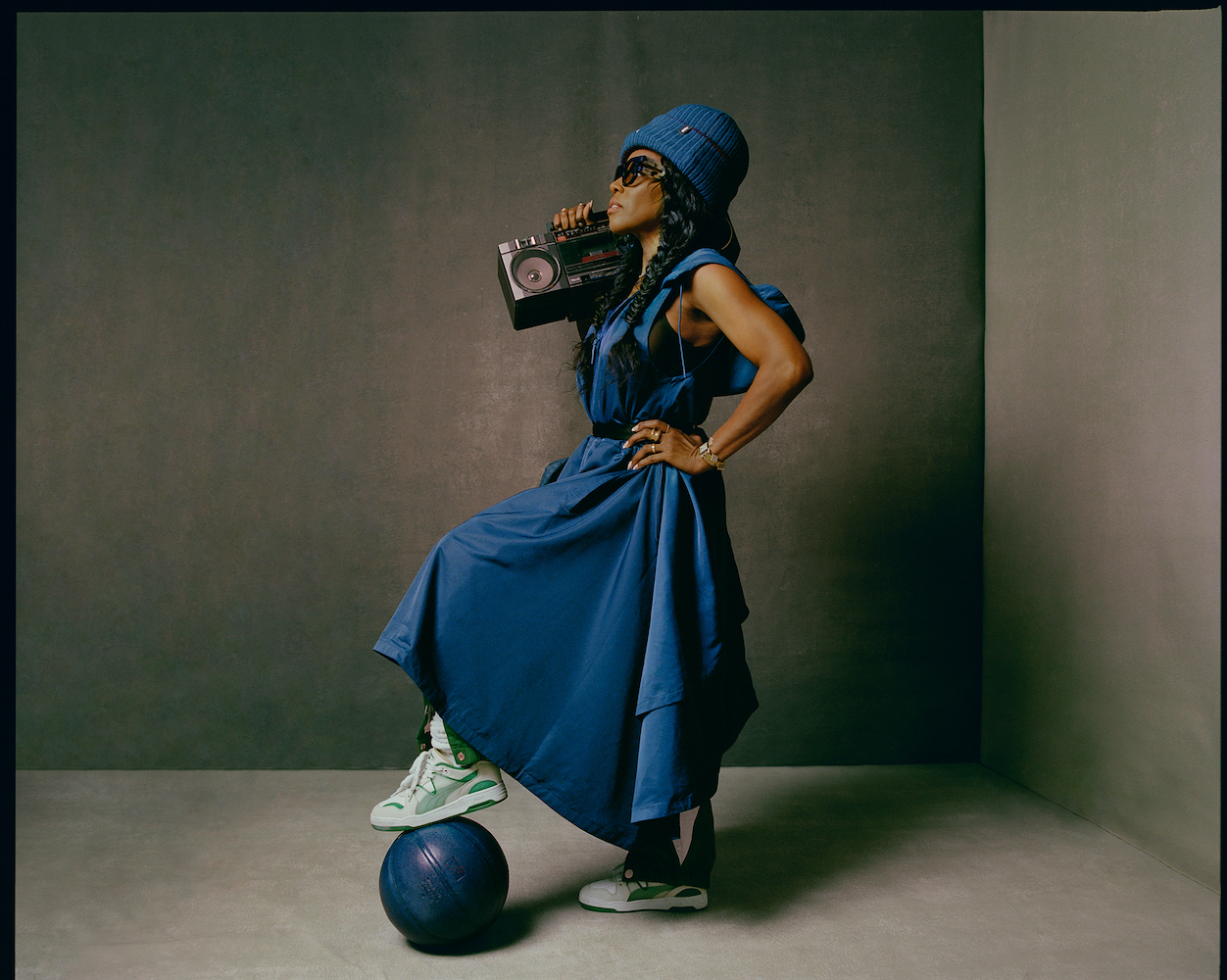
PUMA x June Ambrose: “Keeping Score” is available March, 2023 online at PUMA.com
Discover More
